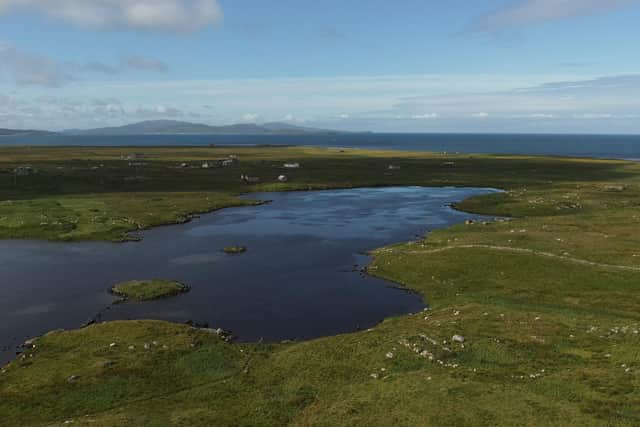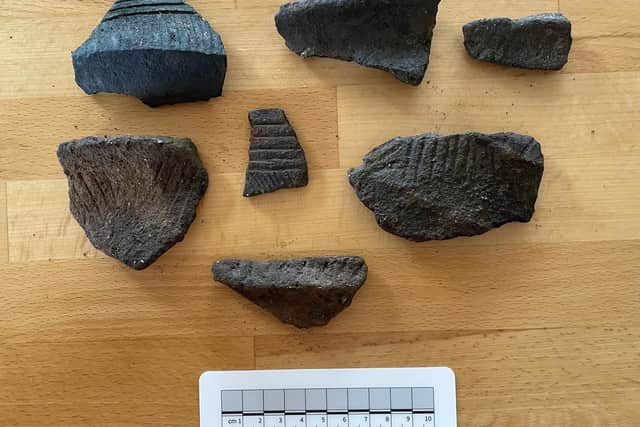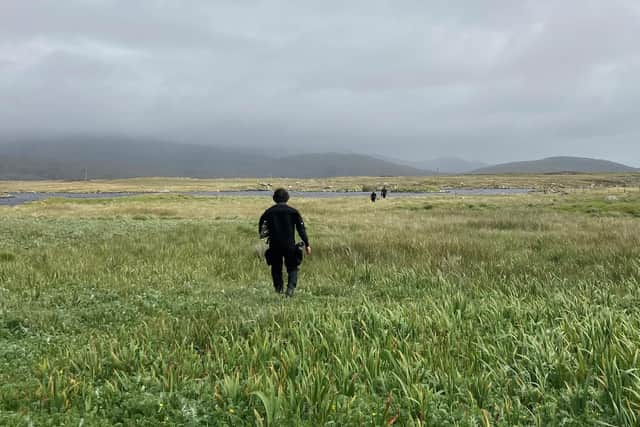Secrets of deep revealed as ancient man-made islands in Hebrides discovered
Archaeologists have been searching underwater for crannogs - artificial islands made from rock where people likely lived or gathered for special events – in the lochs of North and South Uist.
The team have now discovered two new previously unknown sites from the Neolithic period with fragments of everyday items recovered from the water.
Advertisement
Hide AdAdvertisement
Hide AdProfessor Duncan Garrow, of Reading University, and colleagues from the Islands of Stone project have been snorkelling in the lochs to find crannogs, which were constructed from rocks and sometimes had a causeway.
He said it was a “very special moment” when a find was made, with pieces of heavily decorated Neolithic pottery helping to date human activity on the lochs.
Professor Garrow said: "You have this bit of pottery found after 5,500 years and you are the first person to see it since then. It is always a special feeling, having that moment of connection with the past and people who lived here.”
Satellite imagery earlier detected thousands of previously unknown island sites of potential interest, with around 30 being investigated on Uist this month.


Prof Garrow added: “We have been using that process to identify new sites that no one knew about. There are so many lochs - and so many islands that had not been identified but have now been picked up by satellite imagery. We are talking literally thousands.
“We don’t look at every single one but look for islets which are the right size and shape for a crannog.
"Some of the crannogs are so small that you could perhaps fit a very small house on them. Some of them were probably used for settlement and some people were probably using them for special activities removed from everyday life.


“Most of them are made by piling up rocks in the middle of a loch, so it would have been a hell of a lot of work to do. They have gone to some effort to create an artificially made island, so they must have had a special purpose.
Advertisement
Hide AdAdvertisement
Hide AdProfessor Garrow is working in the islands with Professor FraserSturt of Southampton University and Angela Gannon, archaeological investigator with Historic Environment Scotland.
Finds made on Uist include heavily decorated pottery from the Neolithic period, worked quartz, flints and some pumice, which perhaps washed in from Iceland and was used to float fishing nets or as a type of sandpaper.
The project builds on the team’s earlier finds on Lewis, where it was discovered that a number of crannogs, including one on Loch Bhorgastail, were thousands of years older that previously thought and dated to the Neolithic.


Large quantities of ceramic vessels were found, with their size suggesting that the pots were complete when placed in the water, possibly as part of a ritual.
Prof Garrow added: “The reason we are here is to prove there were Neolithic crannogs across the Outer Hebrides, and not just in Lewis, and we have so far shown that they are more widespread than previously known.
“The Islands of Stone project team wish to acknowledge the Arts and Humanities Research Coucil for funding and Comhairle nan Eilean Siar (Western Isles Council) Archaeology Service for support”.
Comments
Want to join the conversation? Please or to comment on this article.
